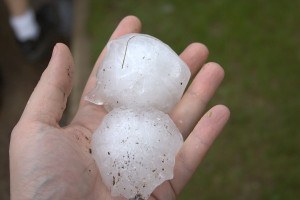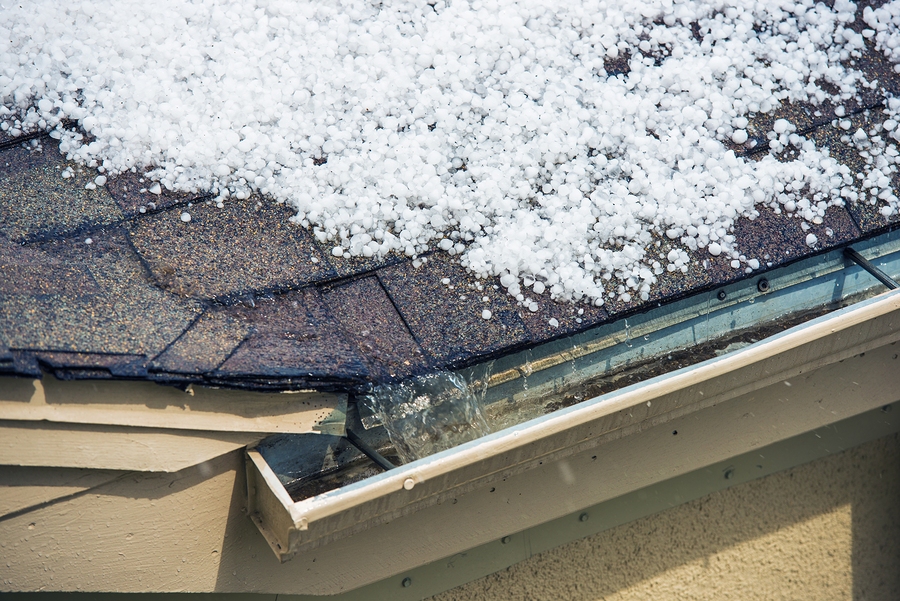In the last few years, hail damage lawsuits have crowded Texas courts. Using the same model employed in the Lone Star state, hail damage litigation is beginning to impact other states where large hail events have occurred, including Colorado, Oklahoma and Minnesota.
Colorado, in particular, has seen a significant uptick in insurance claims and suits relating to hail damage. One reason is that Colorado, like Texas, has favorable consumer protection laws. In fact, Colorado allows contractors to file bad faith lawsuits against insurance companies resulting from disputes on a claim, according to Steven Badger, a Dallas-based partner with Zelle LLP.
That’s similar to the situation giving rise to all the lawsuits in Florida, he explained.
“Florida recognizes a formal assignment of benefits that allows insureds to assign claim benefits to the contractor. In Colorado, the contractor is considered a party with an actual remedy under the bad faith statute when the carrier doesn’t fully pay for the alleged roof repairs,” Badger said.
In addition, Colorado is seeing increasing use of the appraisal process, with increasing abuses during the process by certain public adjusters. professional appraisers and attorneys, Badger said.
“Interestingly, we are seeing a significant influx of individuals from Florida getting involved in Colorado claims and appraisals,” Badger said. “For whatever reason, most of the disputed claims and appraisals that we are working on for our clients in Colorado involve individuals from Florida.”
This may be due to minimal hurricane activity in Florida in recent years, as well as the fact that Texas already has a ripe market of appraisers, public adjusters and policyholder attorneys, he said; whereas Colorado does not.
“It’s a market where they can come in from Florida and set up shop,” he said.
‘Badger’s firm has taken an aggressive and vocal stance on behalf of the insurance industry in not only defending hail litigation, but also in responding to improper conduct by those involved in the claims and litigation process. Recently, Badger filed a class action lawsuit on behalf of a group of homeowners against a North Texas roofing contractor alleged to be involved in improper claims handling conduct.
Several of Badger’s articles on the subject have been published by Claims Journal.
In one article, he offered several possible solutions to the problem in Texas. He said these same solutions can be applied in other states as well.
“One idea that would be applicable anywhere is to mandate the use of Class 4 hail rated roofing products in areas of severe hail exposure. There are products out there that are more hail resistant and would not fail in small hail events,” Badger said.
 In fact, Underwriters Laboratories recently submitted a proposal to the International Building Code drafters, proposing a revision to the codes that would require hail rated products in areas of severe hail exposure, he explained. That proposal was voted down as a result of overwhelming opposition from roofing contractor and roofing manufacturer trade groups.
In fact, Underwriters Laboratories recently submitted a proposal to the International Building Code drafters, proposing a revision to the codes that would require hail rated products in areas of severe hail exposure, he explained. That proposal was voted down as a result of overwhelming opposition from roofing contractor and roofing manufacturer trade groups.
“Another solution is stronger enforcement in the various states of what I call the “no negotiate” statutes that prohibit contractors from involving themselves in the insurance claims process,” Badger said. “Most states already have statutes or insurance regulations in place that prohibit such conduct, but unfortunately the conduct remains rampant.
Contractors routinely act on behalf of building owners in negotiating insurance claims. Laws in place prohibiting such conduct should be enforced.”
If the barrage of hail damage lawsuits continues, there is the possibility that insurers will exclude these type of claims, Badger said.
“It’s something that’s already happening,” he said. “In Hidalgo County, where there were over 10,000 lawsuits filed after the 2012 hailstorms, at least two major insurers have completely pulled out of the market. We will continue to see this market response wherever hail lawsuits are proliferating.”
Badger said he wouldn’t be surprised to see a Texas Hailstorm Insurance Association created, much like the windstorm insurance association.
“Will it happen? It could. But I’d sure like to see another solution to this crisis, and that can be achieved by restoring some balance and fairness to claims and litigation process,” he said.
“If we could address the problems without changing any laws or having to restrict coverage, that would be ideal,” Badger stated.
Badger said that he doesn’t see that happening in this current climate.
One positive trend in the right direction is that courts are beginning to take notice, he said.
“There are federal judges writing opinions clearly indicating that they understand what’s happening in these lawsuits and they don’t like it,” he explained. “To bring an end to this problem without legislative action or policy form changes will require assistance from the courts, from the Texas Department of Insurance, from the State Bar of Texas and from local criminal authorities.”
As a result of the articles Badger has written on the subject and his recent class action lawsuit filing, he has had numerous communications with investigators from the Texas Department of Insurance, the State Bar of Texas and a couple of local district attorneys.
“They are paying attention to the complaints being filed and are beginning to take action against illegal conduct,” said Badger.
Badger recommended that insurers facing an onslaught of hail damage lawsuits seeking damages that are clearly not covered should stand by their policy forms and applicable law.
“They need to break the model where a public adjuster or lawyer knows that if they can get someone to sign a contract allowing them to file a lawsuit, all they have to do is file the suit and the insurance carrier will pay something regardless of merit. That model has to come to an end,” explained Badger. “Also, the carriers need to spend the time to root out the illegal conduct going on in some of these claims and report that bad conduct to the authorities.”
These days, Badger has a team of coverage attorneys spending their days defending hail damage lawsuits.
“That’s allowing me to spend all of my time in focusing on addressing the fraudulent and illegal conduct we are seeing,” he said. “This includes the class action we just filed against a roofing contractor for the unauthorized practice of public adjusting, reporting building owners to the authorities for fabricating replacement cost invoices and working with reputable lawyers who are bringing lawsuits against other lawyers for illegal case running.”
While it may all seem negative, Badger said he is encouraged by the calls of support he has received from reputable contractors who are tired of dealing with fellow contractors that illegally waive deductibles; from experienced public adjusters tired of new entrants into their industry who have no desire to actually adjust and settle a claim, but just want to get their matters into the hands of a lawyer; and from real policyholder attorneys who are ashamed to see what is happening within their ranks.
“Everyone knows there is a problem in Texas and that the problem is spreading to other states,” Badger said. “We just haven’t agreed yet on the solution to the problem.”
Was this article valuable?
Here are more articles you may enjoy.


 Changing the Focus of Claims, Data When Talking About Nuclear Verdicts
Changing the Focus of Claims, Data When Talking About Nuclear Verdicts  Atmospheric River to Hit Pac Northwest and California; Snow Could Impact Parts of Northeast And Great Lakes
Atmospheric River to Hit Pac Northwest and California; Snow Could Impact Parts of Northeast And Great Lakes  T-Mobile’s Network Breached as Part of Chinese Hacking Operation
T-Mobile’s Network Breached as Part of Chinese Hacking Operation  Allstate Insurers Sue Hyundai, Kia to Pay for Claims From Defective Cars
Allstate Insurers Sue Hyundai, Kia to Pay for Claims From Defective Cars 